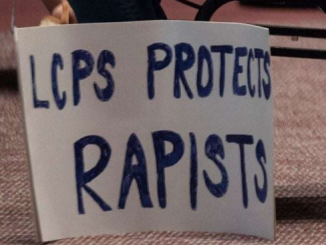
School districts across the country are taking steps to implement mandatory fentanyl education and stock their schools with opioid reversal drugs like Narcan and naloxone.
Through the 2022-2023 school year, school districts are stocking their middle and high schools with Narcan and training educators how to administer naloxone, a drug that normalizes breathing if it has been slowed or stopped due to an overdose. In 2021, 884 adolescents died from a fentanyl-involved overdoses, an increase from 253 in 2019, according to a JAMA Network report. (RELATED: Firefighters In Phoenix Say They’re Running Out Of Narcan For Overdose, Poisoning Calls)
“Thank God for Narcan,” Derek Maltz, the former head of the Drug Enforcement Agency (DEA) Special Operations Division, told the Daily Caller News Foundation. “Thank God some brilliant people developed Narcan because it’s saving so many lives. If it wasn’t for Narcan, the numbers of deaths would be off the charts, beyond what anyone could imagine. I’m very appreciative and very supportive of Narcan. I would like to see Narcan everywhere. But it’s a very powerful indication of how widespread and how bad this problem is.”
In September, the second largest school district in the country, Los Angeles Unified School District in California, announced it would be stocking its entire district with the nasal spray version of naloxone. Hays Consolidated Independent School District in Kyle, Texas, partnered with the Hays County Sheriff’s Office to distribute Narcan to school nurses and school resource officers.
The middle and high schools of Chickasaw City Schools in Chickasaw, Alabama, are receiving doses of Narcan as of Oct. 10, according to WKRG News. The nurses will be trained in administering Narcan in the event of an overdose.
The Des Moines school board in Des Moines, Iowa, passed a proposal to stock Narcan in 60 district buildings after the district’s health services supervisor identified 11 instances of overdose when the drug could have been administered, KCCI News reported. In Oregon, the nonprofit Direct Relief has stocked five school districts with Narcan, with plans to stock four more, according to KOIN News.
Aside from providing reversal drugs, schools are also providing education services; the San Diego County of Board Supervisors passed a proposal on Oct. 11 that requires fentanyl awareness education in schools, according to KPBS News. The education includes training for parents and students on how to administer naloxone.
Los Angeles Unified School District is creating a safety task force to provide educational materials to district families on the drug. Peer-to-peer counseling will also be implemented to create awareness for the drug.
In order to make a difference and combat the fentanyl crisis, however, students need to be met on social media and by celebrities in addition to resources by schools, Maltz told the DCNF.
“They are watching video reels, they’re watching social media apps,” Maltz told the DCNF. “They’re learning from their smart devices about everything that’s going on in the world. They might follow some Twitter accounts here and there, but they’re watching videos all day long on Tik Tok. Well the messaging is not getting to the kids that are dying at a very high rate. In my opinion, if we could get some professional athletes, role models and celebrities out there on the social media sites putting some good materials about the death and destruction of what’s going on, that’s going to be very effective.”
Ahead of Halloween, warnings are coming regarding “rainbow fentanyl” which the DEA says can be mistaken for candy or sidewalk chalk.
While individual school districts taking action is the first step, the Department of Education (DOE) needs to increase their action against the drug because it is not just affecting adults, but children as well, Haltz told the DCNF.
“The Department of Education is sleeping,” Haltz told the DCNF. “They’re not doing the basic things necessary to get the messages in the schools and I’m not talking about the high schools. I’m talking elementary school and middle school as well. Because if you wait till high school, it could be too late. Even middle school now is becoming a problem, because there’s kids as young as 12 years old dying from this poison.”
The DOE did not immediately respond to the DCNF’s request for comment.
* Article from: The Daily Caller


